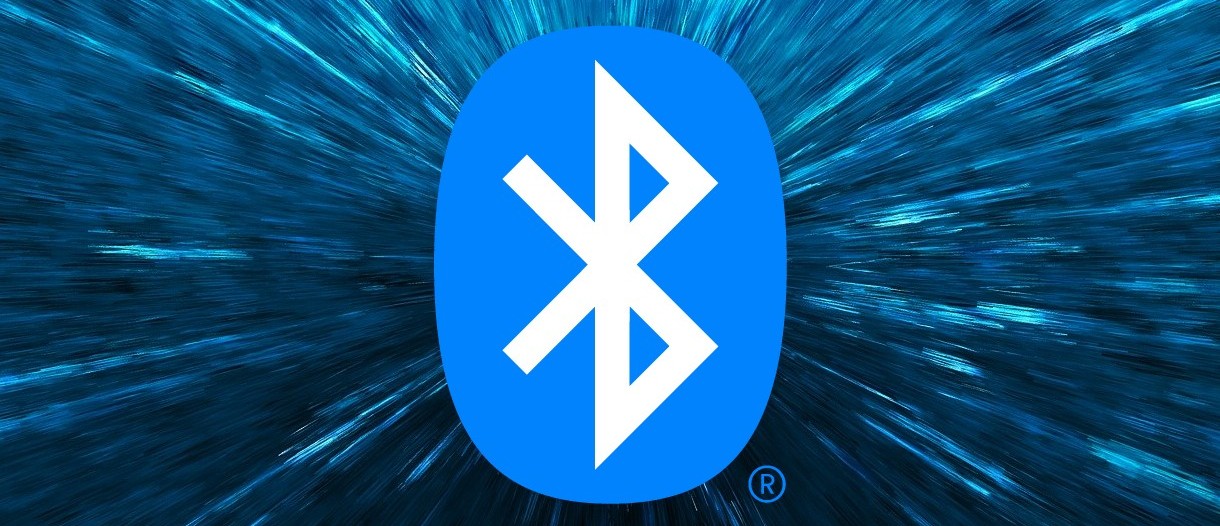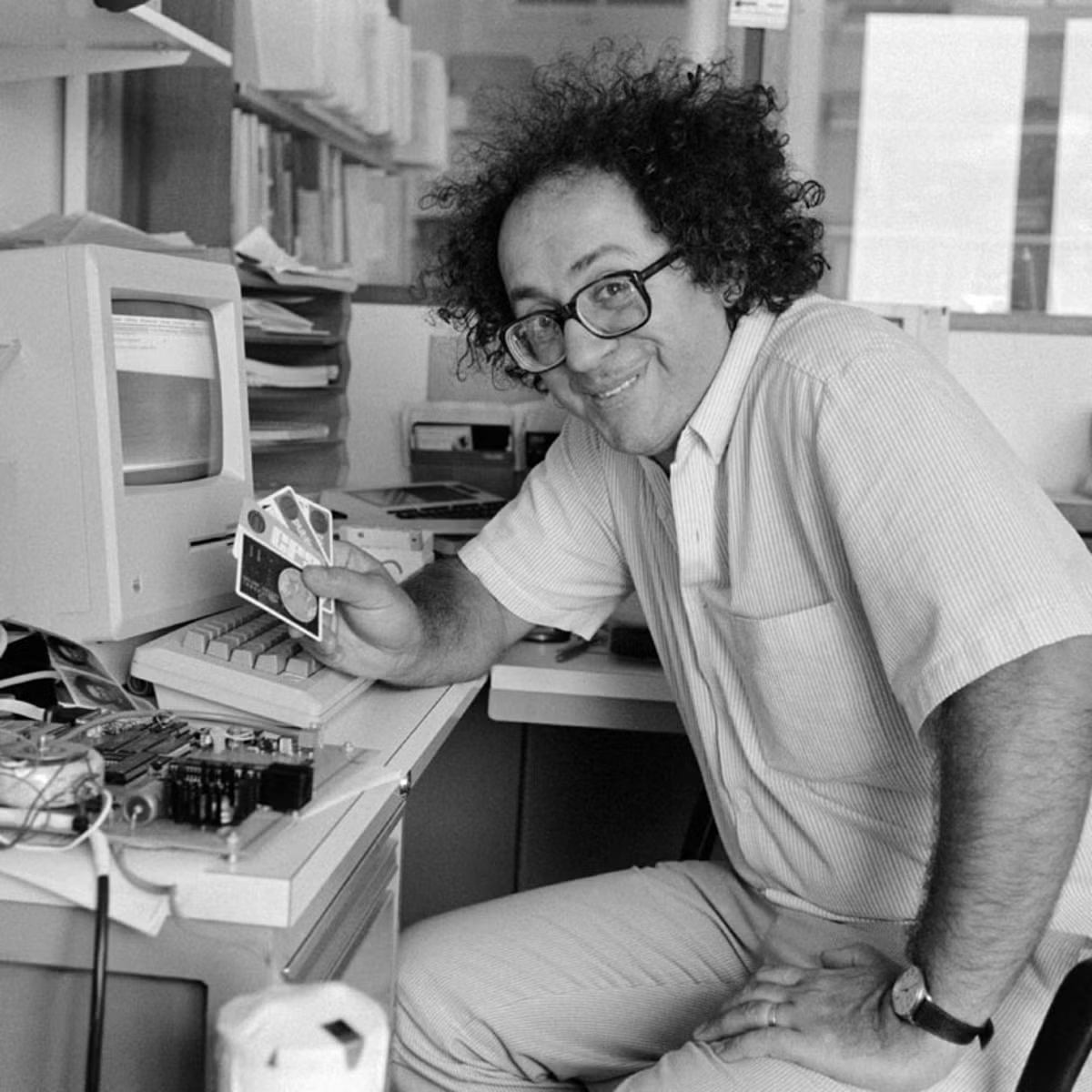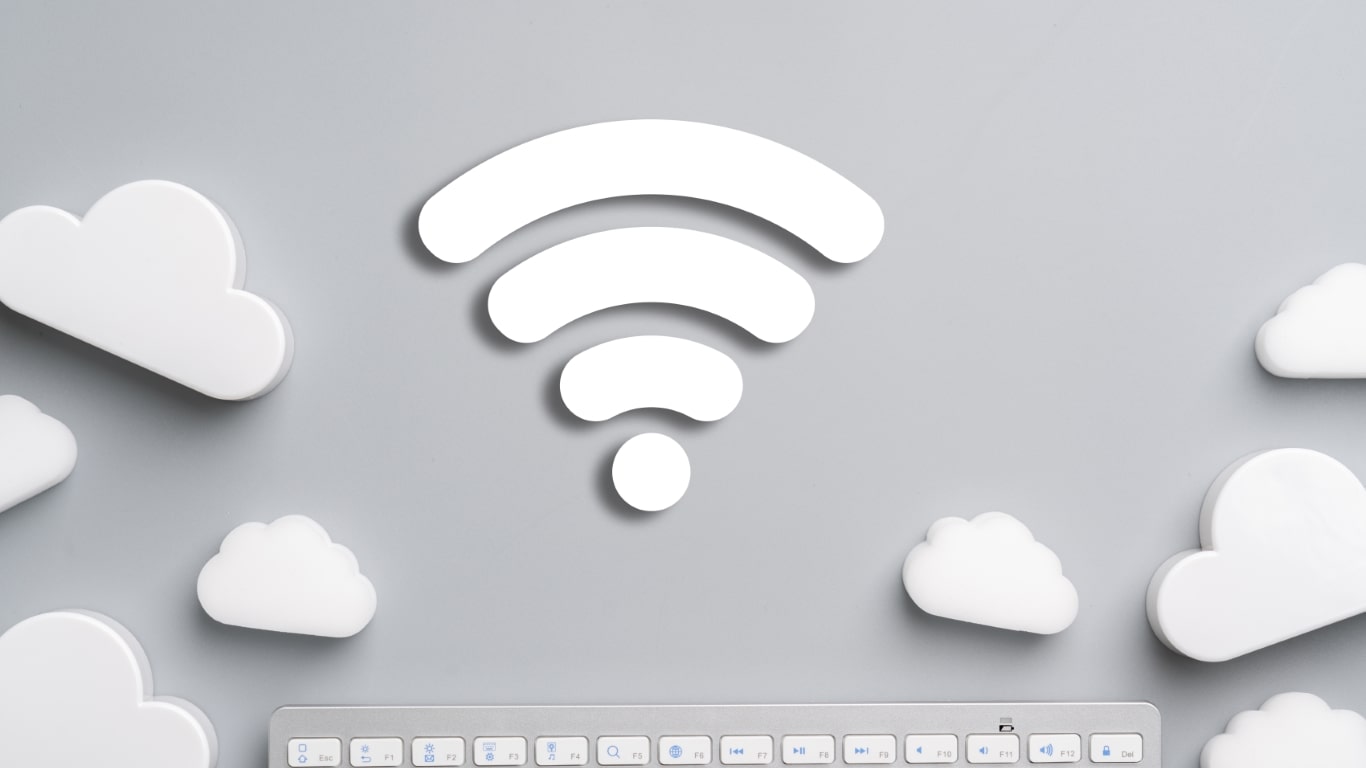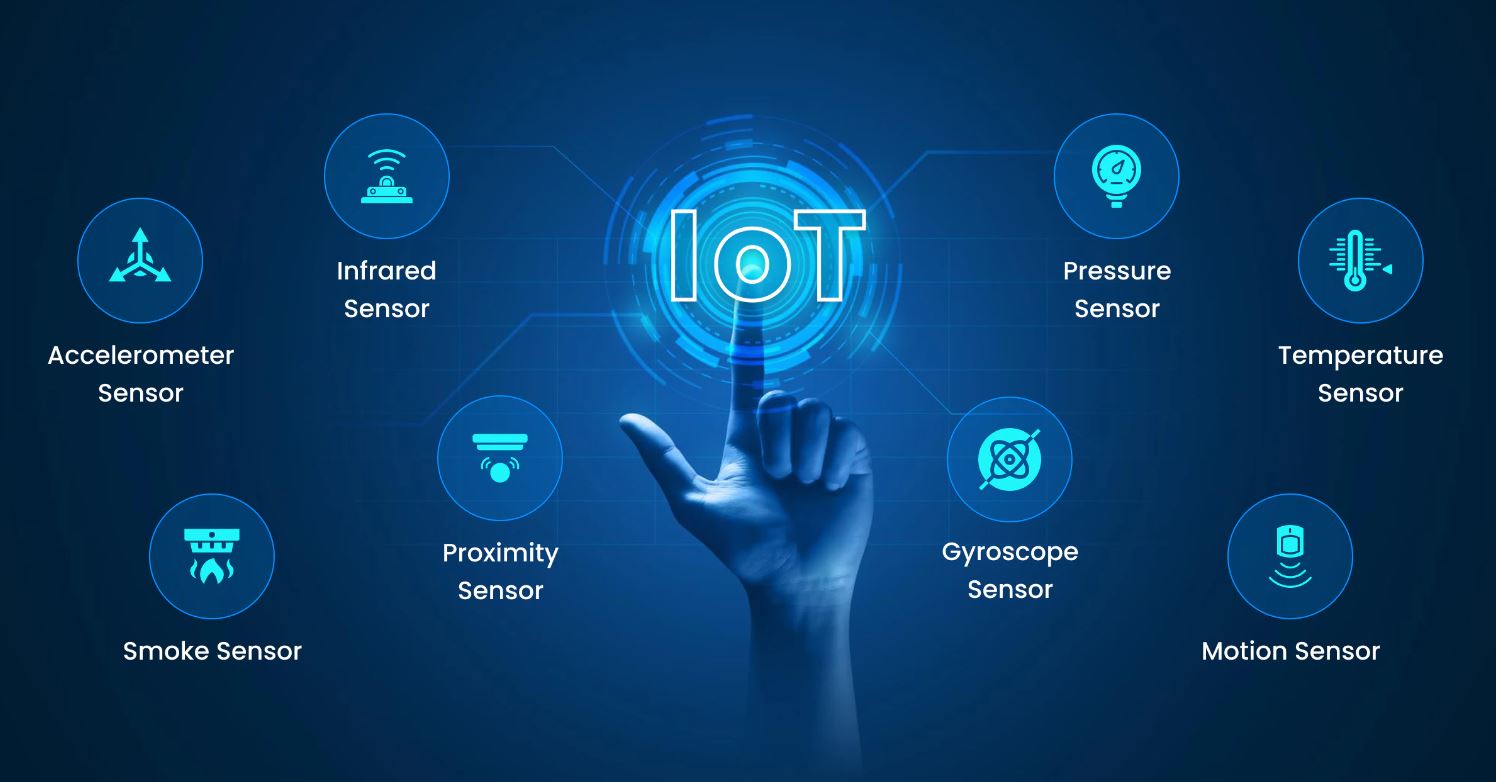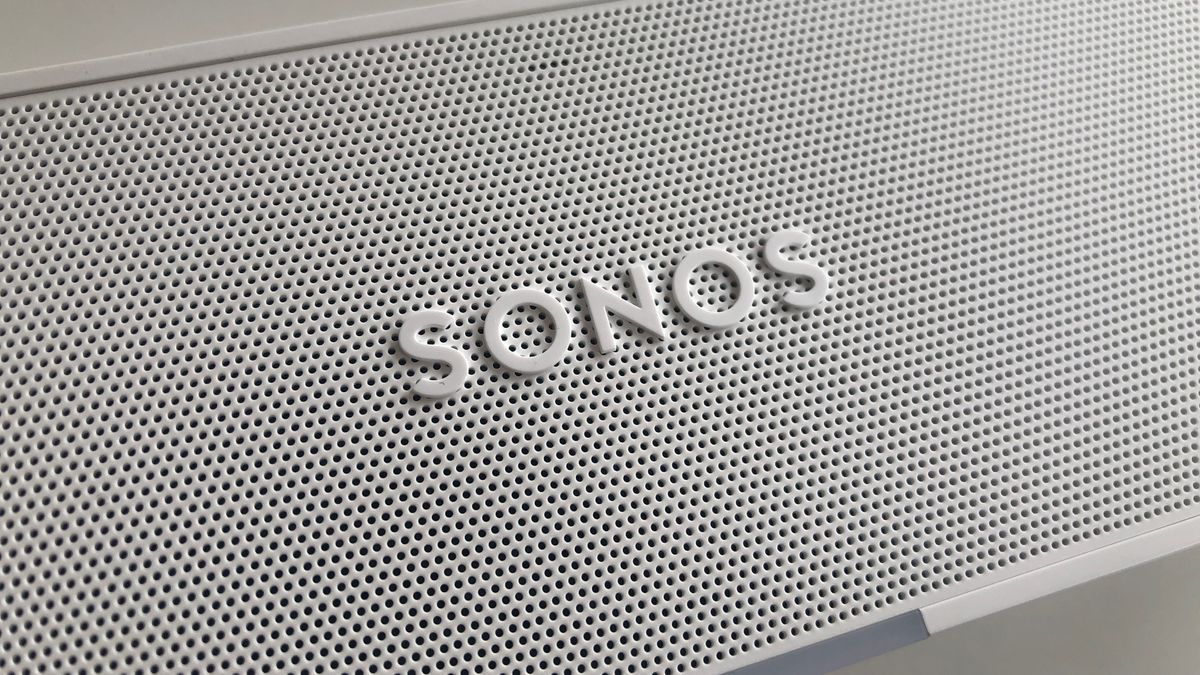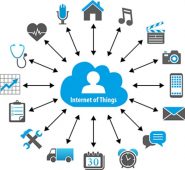Introduction
The Internet of Things (IoT) has become an increasingly buzz-worthy term in recent years, revolutionizing the way we interact with technology and the world around us. From smart homes and connected devices to industrial automation and healthcare advancements, IoT has permeated nearly every aspect of our lives.
But what exactly is the Internet of Things? In a nutshell, IoT refers to the network of physical devices embedded with sensors, software, and connectivity that enables them to collect and exchange data. These devices can range from everyday objects like appliances, wearables, and vehicles to more complex machinery in industries such as manufacturing and agriculture.
The concept of IoT is rooted in the idea of creating a seamless connection between the physical and digital worlds. By integrating the capabilities of sensors, actuators, and communication technologies, IoT enables these devices to interact with each other and with us, ultimately enhancing efficiency, convenience, and productivity.
The inception of IoT can be traced back to the early 1980s when a group of researchers at Carnegie Mellon University connected a Coca-Cola vending machine to the internet. This breakthrough allowed the machine to report its inventory and temperature levels, demonstrating the potential for remote monitoring and control of devices through network connectivity.
Over the years, advancements in technology and the widespread adoption of the internet paved the way for further development of IoT. As more devices became internet-enabled and communication networks improved, IoT grew in scope and complexity. Today, we find ourselves in a world where billions of interconnected devices are constantly exchanging data and reshaping our interactions with the physical environment.
The impact of IoT can be seen across various industries. In agriculture, IoT applications help monitor soil conditions, automate irrigation systems, and optimize crop yields. In healthcare, IoT devices enable remote patient monitoring, real-time tracking of vital signs, and the delivery of personalized healthcare services. In smart cities, IoT is used to optimize transportation systems, manage energy consumption, and enhance public safety.
However, as with any technological advancement, IoT is not without its challenges and concerns. Security and privacy are major considerations, as the massive amount of data collected by IoT devices can be vulnerable to cyberattacks and misuse. Additionally, there are concerns regarding the ethical implications of IoT, such as data ownership, consent, and the potential for increased surveillance.
Yet, despite these challenges, the future of IoT looks promising. As technology continues to evolve, we can expect even greater integration of IoT in our daily lives, with advancements in artificial intelligence, 5G connectivity, and edge computing driving further innovation. IoT has the potential to improve efficiency, boost productivity, and enhance our overall quality of life.
In the following sections, we will delve into the origins of IoT, explore the early devices that paved the way, discuss the birth of the term “Internet of Things,” analyze the evolution and growth of IoT, examine its impact on industries, and address the challenges and concerns associated with this technology. So, fasten your seatbelts and get ready to embark on an intriguing journey into the world of IoT!
The Origins of IoT
The concept of connecting devices and enabling them to communicate with each other can be traced back several decades, although the term “Internet of Things” was not coined until much later. The origins of IoT can be attributed to the convergence of various technological advancements and pioneering research by individuals and organizations.
One crucial development in the early stages of IoT was the integration of embedded systems in everyday devices. In the late 1970s and early 1980s, researchers at the Xerox Palo Alto Research Center (PARC) developed one of the first networked appliances, the Xerox Alto. This groundbreaking innovation paved the way for the future integration of computing power and communication capabilities in everyday objects.
Another significant milestone in the origins of IoT was the pioneering work done by researchers at Carnegie Mellon University in the early 1980s. A team led by Mark Weiser connected a Coca-Cola vending machine to the internet, sparking the idea of remotely monitoring and controlling devices. This experiment demonstrated the potential of IoT technologies and laid the foundation for future advancements.
Further advancements in wireless communication and sensor technologies played a crucial role in the evolution of IoT. In the 1990s, the emergence of wireless protocols such as Bluetooth and RFID (Radio Frequency Identification) enabled the seamless connection of devices without the need for physical cables. The miniaturization of sensors and their decreasing costs made it feasible to embed them in a wide range of devices, further fueling the growth of IoT.
Parallel to these technological developments, the concept of a “smart home” began to take shape. In the early 2000s, researchers and innovators started envisioning homes equipped with interconnected devices that could be controlled and automated. Projects like the MIT Media Lab’s “Things That Think” explored the potential of embedding intelligence and connectivity in everyday objects, setting the stage for the interconnected homes we see today.
It is worth mentioning that while these early developments laid the groundwork for IoT, the actual term “Internet of Things” was coined later. In 1999, Kevin Ashton, a British entrepreneur and co-founder of the Auto-ID Center at MIT, used the phrase in a presentation to describe the concept of connecting physical objects to the internet. Ashton’s vision focused on utilizing RFID technology to track and manage inventory in supply chains.
The origins of IoT are a testament to human curiosity and innovation. Through a series of technological breakthroughs and visionary thinking, we have transformed the concept of connecting devices into a reality. In the following sections, we will explore the early IoT devices, discuss the birth of the term “Internet of Things,” delve into the evolution and growth of IoT, and examine its impact on various industries.
Early IoT Devices
The early days of IoT were marked by the development and experimentation of innovative devices that laid the foundation for the interconnected world we live in today. These early IoT devices showcased the potential for seamlessly connecting physical objects to the internet and opened up new possibilities for automation, data collection, and remote control.
One of the pioneers of early IoT devices was the Smart Fridge, introduced by LG Electronics in 2000. This refrigerator was equipped with a built-in display, temperature sensors, and barcode scanners. With an internet connection, it could provide users with real-time information about the contents of the fridge, expiration dates, and even suggest recipes based on the available ingredients. The Smart Fridge showcased the convenience and potential of IoT in our everyday lives.
Another notable early IoT device was the “Nest Learning Thermostat” launched by Nest Labs in 2011. This smart thermostat revolutionized home heating and cooling by learning users’ preferences and automatically adjusting the temperature to optimize energy efficiency. It could also be controlled remotely through a smartphone, giving users greater convenience and control over their home’s climate.
Wearable devices were also a significant part of the early IoT landscape. The Fitbit, released in 2009, was one of the first commercially successful wearable devices that tracked fitness and health data. With sensors that measured steps, heart rate, and sleep patterns, the Fitbit showcased the potential of IoT for personal health and wellness monitoring. It also paved the way for the development of more advanced wearables, such as smartwatches and fitness trackers.
Early IoT devices also extended into the realm of industrial applications. In 2002, the term “Industrial Internet of Things” (IIoT) was introduced to describe the integration of IoT technologies in industrial settings. The concept focused on leveraging IoT devices to collect data, monitor equipment performance, and optimize industrial processes. Examples of early IIoT devices included sensors and actuators embedded in manufacturing equipment and machinery, enabling remote monitoring and predictive maintenance.
Though not as well-known as consumer-facing devices, early IoT devices in the agricultural industry played a vital role in transforming farming practices. Automatic irrigation systems equipped with moisture sensors and weather data helped optimize water usage and increase crop yields. Livestock monitoring devices tracked animal health and location, improving farming efficiency.
These early IoT devices showcased the immense potential of connected technologies and how they could enhance various aspects of our lives. They acted as catalysts for the widespread adoption of IoT, inspiring further innovation and paving the way for the interconnected world we live in today.
In the next section, we will explore the birth of the term “Internet of Things” and how it gained recognition as a significant technological trend.
The Birth of the Term “Internet of Things”
The term “Internet of Things” (IoT) first came into the public lexicon in the late 1990s, thanks to the efforts of Kevin Ashton, a British entrepreneur and co-founder of the Auto-ID Center at MIT. Ashton used the phrase in a presentation to describe the concept of connecting physical objects to the internet and enabling them to communicate and interact with each other.
Ashton’s original vision for IoT was centered around utilizing RFID (Radio Frequency Identification) technology to track and manage inventory in supply chains. He believed that by connecting everyday objects to the internet, businesses could improve efficiency, reduce costs, and gain valuable insights into their operations.
Although the term “Internet of Things” gained some attention within academic and research circles, it remained relatively unknown to the general public for several years. However, the potential of IoT technologies began to garner greater recognition as more devices became internet-enabled, communication networks improved, and the world became increasingly interconnected.
In 2005, the International Telecommunication Union (ITU) recognized the significance of IoT and published a report titled “The Internet of Things” that emphasized the potential benefits and challenges associated with this emerging field. The ITU report spurred further interest and discussion around IoT, contributing to its growing prominence.
As IoT continued to evolve and capture widespread attention, industry leaders and organizations began to adopt and champion the term. In 2009, the Internet of Things Conference was held in Brussels, Belgium, bringing together experts and enthusiasts to explore the latest advancements and applications of IoT.
Since then, the term “Internet of Things” has become firmly embedded in our technological vocabulary. It has gained recognition as a significant trend and has been embraced by various industries and sectors worldwide. The concept of IoT has expanded beyond supply chain management and inventory tracking to encompass a wide range of applications, from smart homes and wearables to industrial automation and smart cities.
The birth of the term “Internet of Things” acted as a catalyst for accelerating the development and adoption of IoT technologies. It provided a unifying language and framework for researchers, technologists, and businesses to explore the potential of interconnected devices and drive innovation in this field.
In the following sections, we will delve into the evolution and growth of IoT, exploring how it has transformed industries and addressing the challenges and concerns associated with this rapidly expanding ecosystem.
The Evolution and Growth of IoT
The Internet of Things (IoT) has experienced a remarkable evolution and unprecedented growth since its inception. From its early days as a concept to its present-day reality, IoT has transformed the way we live, work, and interact with the world around us.
One of the key drivers of IoT’s evolution has been the rapid advancement of technology. The miniaturization of sensors, decreasing costs of computing power, and improvements in communication networks have paved the way for a multitude of interconnected devices. These devices, equipped with embedded systems and connectivity, have become commonplace in our homes, offices, and industries.
As technology matured, the applications of IoT expanded beyond individual devices to interconnected systems. Cloud computing and big data analytics enabled the storage and analysis of massive amounts of IoT-generated data, providing valuable insights for businesses and organizations. The emergence of edge computing brought processing power closer to the devices, allowing for real-time data processing and reduced latency.
The growth of IoT has also been propelled by the increasing availability of high-speed internet connectivity. The rollout of 4G and now 5G networks has accelerated the development and deployment of IoT technologies, enabling faster and more reliable communications between devices. This connectivity has unlocked the potential for real-time monitoring, remote control, and seamless data exchange on a global scale.
IoT has had a profound impact on various industries, revolutionizing processes, and creating new business models. In manufacturing, IoT-enabled industrial automation systems have improved efficiency, productivity, and overall operational performance. In agriculture, smart farming practices, enabled by IoT devices and data analytics, have optimized resource usage and crop yields.
The healthcare sector has also witnessed significant advancements through IoT. Connected medical devices and wearables enable remote patient monitoring, telehealth services, and improved access to healthcare in remote areas. IoT has the potential to enhance patient outcomes and transform the delivery of healthcare services.
Smart cities have embraced IoT to improve sustainability, efficiency, and quality of life for residents. Intelligent transportation systems monitor traffic patterns and optimize routes, reducing congestion and minimizing environmental impact. Smart energy grids manage power distribution and consumption, promoting energy efficiency and integration of renewable energy sources.
However, as IoT continues to expand, it also presents challenges and concerns. Security and privacy vulnerabilities pose significant risks, as interconnected devices become potential targets for cyberattacks. The sheer volume of data generated by IoT devices raises questions about data ownership, governance, and ethical use. In addition, the interoperability of devices and standardization of protocols remain challenges to achieving seamless integration and interoperability.
Looking ahead, the future of IoT holds immense potential. The convergence of IoT with emerging technologies such as artificial intelligence, machine learning, and blockchain will unlock new possibilities and applications. Smart homes will become even more intuitive, with AI-powered virtual assistants and intelligent appliances. Autonomous vehicles will rely on IoT for enhanced connectivity and communication with their surroundings.
As IoT continues to evolve and innovate, it is crucial to address the challenges and concerns in a proactive and responsible manner. Collaborative efforts between industry, academia, and policymakers are necessary to ensure a secure, inclusive, and sustainable IoT ecosystem.
In the next section, we will explore the impact of IoT on various industries, highlighting the transformative power of connected devices and data-driven insights.
IoT’s Impact on Industries
The Internet of Things (IoT) has had a significant and transformative impact on various industries, revolutionizing processes, enhancing efficiency, and enabling new business models. Let’s explore some of the key industries that have been influenced by the power of IoT.
In the manufacturing sector, IoT has ushered in the era of Industry 4.0, characterized by increased automation, connectivity, and data-driven decision-making. IoT-enabled sensors and devices embedded in manufacturing equipment provide real-time data on performance, maintenance needs, and production efficiency. This data facilitates predictive maintenance, reduces downtime, and optimizes resource allocation, leading to improved productivity and cost savings.
Agriculture has also experienced a digital transformation through IoT. Smart farming practices, enabled by connected sensors, drones, and data analytics, have enhanced crop yields, reduced water usage, and improved sustainability. Soil moisture sensors, weather data, and predictive analytics enable farmers to optimize irrigation, fertilization, and pest control, leading to increased efficiency and reduced environmental impact.
In the healthcare industry, IoT devices have revolutionized patient care, remote monitoring, and healthcare delivery. Wearable devices track vital signs, monitor medication adherence, and provide real-time health data, enabling personalized and preventive care. Remote patient monitoring systems allow healthcare professionals to monitor patients’ health conditions from a distance, reducing hospital visits and improving access to healthcare.
Smart cities leverage IoT technologies to optimize services, enhance sustainability, and improve quality of life for residents. Connected infrastructure enables real-time monitoring and management of energy consumption, water usage, traffic flow, and waste management. This data-driven approach leads to efficient resource allocation, reduced environmental impact, and improved urban planning.
The transportation and logistics industry has also been transformed by IoT. Connected sensors and GPS-enabled devices provide real-time tracking and monitoring of goods, optimizing routes, and minimizing delays. Smart transportation systems enhance traffic management, optimize public transportation, and improve road safety. Autonomous vehicles rely on IoT for connectivity, enabling them to communicate with other vehicles and infrastructure, leading to safer and more efficient transportation.
Retail and customer service have been shaped by IoT devices and data analytics. Connected devices, such as smart shelves and beacons, provide real-time inventory tracking, automate stock replenishment, and offer personalized product recommendations to customers. IoT-powered analytics enable retailers to gain insights into customer behavior, preferences, and buying patterns, facilitating targeted marketing and improving customer experiences.
While these industries have reaped the benefits of IoT, it is important to address the challenges that arise. Privacy concerns, data security, and standardization of protocols are areas that require attention to ensure the responsible and secure implementation of IoT technologies.
The impact of IoT on industries will only continue to grow as technology advances further. With the integration of artificial intelligence, machine learning, and edge computing, IoT will unlock new opportunities and transform industries in ways we may not yet fully anticipate.
In the next section, we will explore the challenges and concerns associated with IoT and discuss the steps that need to be taken to ensure a secure and sustainable IoT ecosystem.
Challenges and Concerns with IoT
While the Internet of Things (IoT) holds tremendous promise, it also presents challenges and concerns that need to be addressed to ensure its secure and responsible implementation. Let’s explore some of the key challenges and concerns associated with IoT.
One of the primary concerns with IoT is security. As more devices become interconnected and collect and transmit sensitive data, the risk of cyberattacks and data breaches increases. IoT devices are often targeted because they may have weaker security measures compared to traditional devices. It is crucial to implement robust security protocols, encryption, and authentication mechanisms to protect data and ensure the integrity and privacy of IoT systems.
Privacy is another significant concern. IoT devices collect vast amounts of personal and sensitive data, from individuals’ health information to their daily routines and preferences. It is essential to establish clear guidelines and regulations on data collection, usage, and storage to protect individuals’ privacy rights. Striking a balance between the benefits of data-driven insights and the protection of personal information is a priority in the IoT ecosystem.
Interoperability and standardization present additional challenges. With a multitude of IoT devices and platforms available, ensuring seamless integration and compatibility among different devices is essential. The lack of standardized protocols can hinder interoperability and limit the scalability and flexibility of IoT deployments. Collaborative efforts and industry-wide standards are necessary to overcome these challenges and enable the seamless integration of different IoT devices and systems.
Scalability is another challenge with IoT. As the number of interconnected devices grows exponentially, managing and maintaining such a vast network becomes increasingly complex. The sheer volume of data generated by IoT devices also poses challenges in terms of processing, storage, and analysis. Scalable infrastructure and data management solutions are crucial to handle the massive amounts of data generated by IoT devices and ensure their smooth operation.
Power consumption is another concern, particularly for battery-operated IoT devices. As more IoT devices are deployed, energy consumption increases, putting pressure on existing infrastructure. Developing energy-efficient solutions and exploring alternative power sources such as renewable energy will be crucial for sustainable IoT deployments.
Ethical considerations also come into play with IoT. IoT devices can collect highly granular data about individuals, raising ethical questions about consent, data ownership, and potential misuse. Transparent and ethical practices regarding data collection, usage, and sharing need to be established to build trust and maintain the integrity of IoT systems.
Addressing these challenges and concerns requires collaboration between various stakeholders, including governments, industry leaders, researchers, and policymakers. Clear regulations and guidelines regarding security, privacy, and data governance need to be developed to encourage responsible IoT implementation.
In the next section, we will explore the future of IoT and the exciting possibilities it holds for transforming industries and our daily lives.
The Future of IoT
The Internet of Things (IoT) has already made a significant impact on our lives, but its true potential is still unfolding. As technology continues to evolve, the future of IoT holds exciting possibilities for transforming industries and revolutionizing our daily lives.
One of the key areas of advancement in IoT is the integration of artificial intelligence (AI). AI algorithms can process and analyze large volumes of IoT-generated data, enabling insights and predictive capabilities in real-time. This fusion of IoT and AI will drive automation to new heights, resulting in smarter, more autonomous systems that can adapt and optimize their operations without human intervention.
The advent of 5G networks will also play a pivotal role in shaping the future of IoT. With its ultra-low latency and high bandwidth capabilities, 5G will enable faster and more reliable communication between IoT devices. This will unlock new applications, such as real-time remote control of machinery, augmented reality (AR) and virtual reality (VR) experiences, and smart city infrastructure that reacts in real-time to changing conditions.
The rise of edge computing is another important aspect of the future of IoT. Edge computing brings processing power closer to the IoT devices themselves, enabling faster data processing and reducing the need for sending data to the cloud. This enhances real-time decision-making capabilities, reduces latency, and ensures privacy and security by keeping sensitive data closer to the source.
The scope of IoT is expected to expand beyond traditional devices and encompass more elements of our daily lives. Homes will become smarter and more interconnected, with AI-powered virtual assistants seamlessly controlling devices and systems based on personalized preferences. Wearable technologies will advance further, integrating with healthcare monitoring systems to provide continuous health tracking and early detection of health issues.
IoT’s impact on industries will continue to grow, with further optimization and automation of manufacturing processes, the development of autonomous vehicles and smart transportation systems, and the utilization of IoT data for predictive maintenance and resource management. In agriculture, precision farming techniques driven by IoT will lead to increased crop yields and optimized resource usage.
While the potential of IoT is vast, it is essential to address the challenges and concerns associated with this technology. Security and privacy will remain critical considerations, necessitating ongoing research and development of robust encryption methods and authentication protocols. Regulations and policies must be put in place to protect individuals’ privacy and ensure the responsible handling of IoT data.
The future of IoT lies in the collaboration and synergy between various emerging technologies. The combination of IoT, AI, 5G, edge computing, and other advancements will shape a world where connectivity, automation, and data-driven insights are seamlessly integrated into our everyday lives.
As IoT continues to evolve, it holds immense potential for improving efficiency, enhancing quality of life, and creating new opportunities across industries. Embracing the possibilities that IoT offers while addressing its challenges will be crucial in realizing its full potential and shaping a future where interconnected devices and systems work together effortlessly for the benefit of humanity.
Conclusion
The Internet of Things (IoT) has evolved from a concept to a powerful reality that has transformed industries and our daily lives. The ability to connect and communicate with a wide range of devices has paved the way for unprecedented convenience, efficiency, and innovation.
From the early days of IoT pioneers connecting vending machines to the internet, to the present-day interconnected world of smart homes, industries, and cities, IoT has revolutionized the way we interact with technology and the physical environment.
The journey of IoT has been marked by technological advancements, such as the miniaturization of sensors, the development of high-speed communication networks, and the integration of artificial intelligence and edge computing. These advancements have enabled the growth and scalability of IoT, opening up new opportunities and applications.
IoT’s impact on industries has been profound. Manufacturing processes have been optimized, agriculture has become more sustainable, healthcare has advanced with remote monitoring, and smart cities have improved quality of life for residents. IoT has truly reshaped the way businesses operate and how society functions.
However, with its rapid growth, IoT also poses challenges and concerns that need to be addressed. Security vulnerabilities, privacy risks, interoperability issues, scalability, and ethical considerations require careful attention to ensure the responsible and secure implementation of IoT technologies.
Looking ahead, the future of IoT is promising. The integration of AI, the rollout of 5G networks, and the development of edge computing will drive further innovation and unlock new possibilities. Smart homes will become even more intuitive, industries will benefit from automation and predictive analytics, and transportation will become more efficient and autonomous.
As we navigate the future of IoT, it is essential to strike a balance between embracing the transformative potential of IoT and addressing the challenges it presents. Collaborative efforts between industry, academia, and policymakers are necessary to establish robust security measures, protect privacy, standardize protocols, and ensure ethical practices.
The Internet of Things has enabled us to bridge the gap between the physical and digital worlds, creating an interconnected ecosystem that enriches our lives and expands possibilities. With responsible innovation and collective efforts, we can shape a future where the Internet of Things enhances our daily experiences, drives sustainable development, and improves the well-being of individuals and communities globally.










